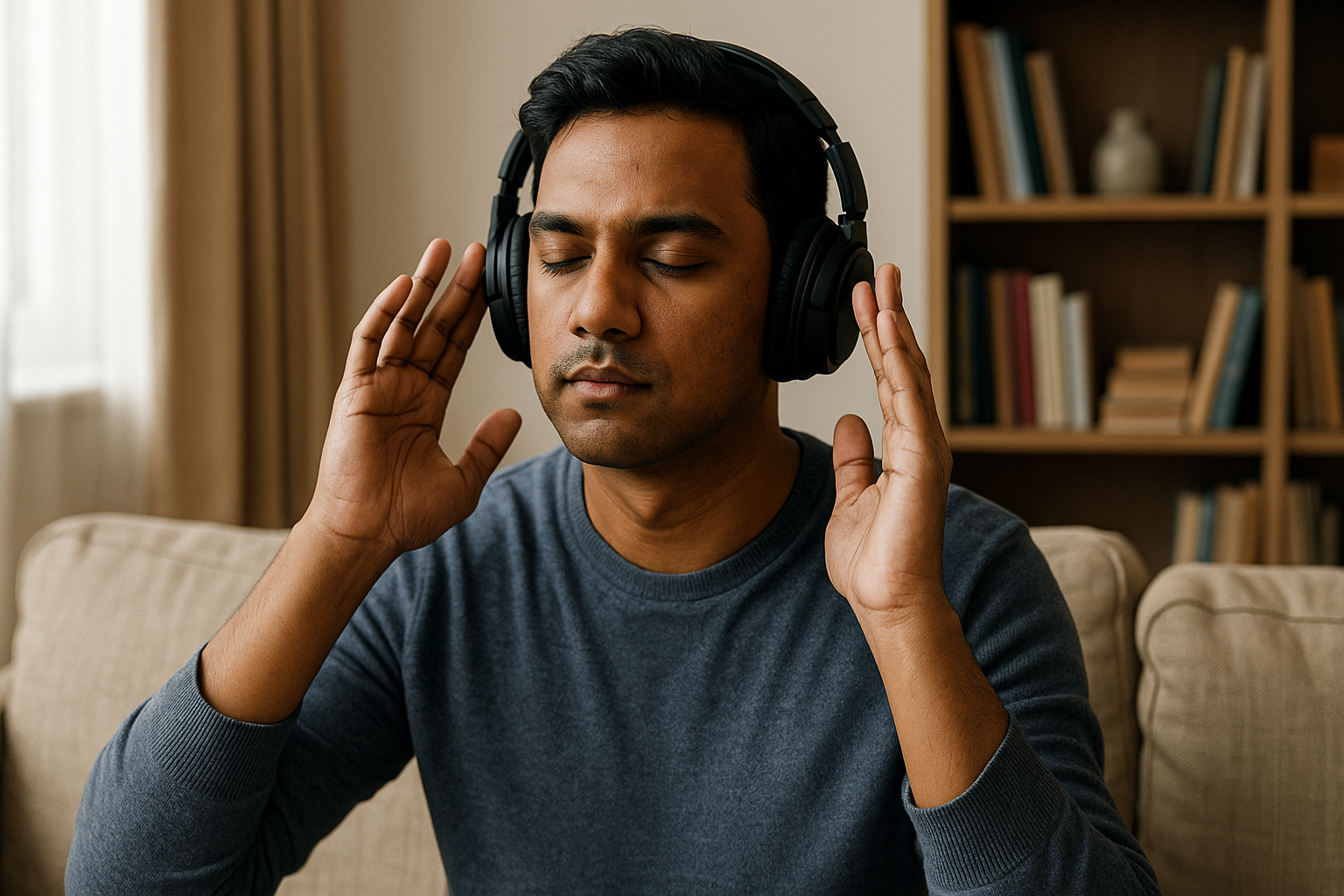When most people think about learning music, they picture practicing scales, reading sheet music, or rehearsing songs. While these activities are essential, one of the most powerful and underrated tools for developing musical skill is active listening. Unlike passive listening—where music plays in the background—active listening requires focused attention, curiosity, and analysis. It is the practice of truly hearing the details of music and using that knowledge to improve your own playing.
For students of all levels, from beginners to professionals, active listening can transform the way you approach music. It deepens understanding, sharpens technique, and enhances creativity. In this article, we’ll explore what active listening is, why it matters, and how to apply it effectively in your musical journey.
What Is Active Listening?
Active listening means engaging with music consciously and intentionally. Instead of letting a song wash over you, you focus on its components: melody, rhythm, harmony, dynamics, texture, and form. The goal is not just to enjoy music, but to study how it works.
For example, when listening to a jazz solo, instead of only enjoying the performance, you might ask: What scale is the soloist using? How do they phrase their lines? What rhythm patterns appear repeatedly?
This process builds awareness, which directly improves your playing.
Why Active Listening Matters
Improves Ear Training
By identifying intervals, chord progressions, and rhythms, you train your ear to recognize musical elements faster.
Strengthens Interpretation
Listening to different interpretations of the same piece shows how phrasing, dynamics, and tempo choices shape emotion.
Expands Musical Vocabulary
Exposure to diverse styles and genres broadens your palette of ideas for improvisation and composition.
Builds Rhythm and Timing
By clapping, tapping, or counting along, you internalize steady rhythm and syncopation.
Connects Theory to Practice
Active listening bridges the gap between abstract theory and real-life application.
Passive vs. Active Listening
- Passive Listening: Music plays in the background while you focus on something else. Useful for mood but limited for learning.
- Active Listening: You give full attention, analyzing details, asking questions, and connecting them to your own practice.
While passive listening can inspire, active listening builds skill.
How to Practice Active Listening
Choose a Focus
Each session, pick one element—melody, rhythm, harmony, tone, or structure. Trying to analyze everything at once can be overwhelming.
Listen Multiple Times
The first listen may give a general impression. The second time, focus on rhythm. The third, on harmony. Each repetition reveals new layers.
Take Notes
Write observations in a notebook. For example: “In the chorus, the singer raises dynamics and shifts to higher pitch for intensity.”
Sing or Hum Along
This helps internalize melody and phrasing. Even if you’re not a singer, reproducing sounds strengthens your ear.
Clap or Tap Rhythms
Physically engaging with rhythm trains coordination and timing.
Compare Versions
Listen to different performances of the same piece. Notice how each artist phrases or interprets differently.
Transcribe
Write down what you hear—melodies, rhythms, or chord progressions. Even partial transcription sharpens listening skills.
Exercises for Active Listening
- Interval Identification
Play a recording and try to identify intervals between notes. Start with simple melodies before moving to complex ones. - Chord Progression Hunt
Choose a pop song and identify the chords. Many songs use I–V–vi–IV progressions. - Rhythm Tracking
Tap along with a drumbeat. Notice syncopation or off-beat accents. - Form Mapping
Sketch the structure of a song: intro, verse, chorus, bridge. - Tone Comparison
Listen to two different guitarists or singers and describe differences in tone.
Applying Active Listening to Your Instrument
- Pianists: Notice how professionals use pedaling and dynamics.
- Guitarists: Pay attention to strumming patterns, picking techniques, and articulation.
- Singers: Study diction, phrasing, and vibrato.
- Drummers: Listen for fills, groove variations, and subtle timing.
- Wind/Brass Players: Focus on breath control and tone color.
By analyzing your instrument in the context of professional recordings, you gain practical insights.
Common Mistakes in Active Listening
- Trying to Analyze Everything at Once
Pick one or two elements per session. - Listening Without Focus
Scrolling on your phone while “listening” reduces effectiveness. - Skipping Repetition
One listen is not enough. Repetition reveals details. - Not Connecting to Practice
Analysis without application won’t improve your playing. Always transfer insights into practice sessions.
Active Listening in Different Genres
- Classical: Notice phrasing, dynamics, and interpretation differences between conductors and soloists.
- Jazz: Focus on improvisation, chord substitutions, and swing feel.
- Blues: Pay attention to bends, slides, and emotional expression.
- Rock: Study rhythm guitar patterns and drum grooves.
- Pop: Observe production choices, harmonies, and vocal techniques.
- World Music: Listen for unique rhythms, scales, and instruments from different cultures.
The Mental Side of Active Listening
Active listening is not just about hearing—it’s about mindset. Cultivate curiosity: ask why something sounds the way it does, and how you can recreate or adapt it. Avoid judgment. Instead of thinking, I can’t play like that, think, What can I learn from this?
Long-Term Benefits of Active Listening
- Deeper understanding of music.
- Faster progress in ear training.
- Broader stylistic awareness.
- More creativity in improvisation and composition.
- Stronger emotional connection with music.
Final Thoughts: Listening as Learning
Practicing your instrument is only part of becoming a musician. The other half is learning to listen actively. By focusing on the details of melody, rhythm, harmony, and expression, you gain insights that no textbook can provide.
The next time you hear music, resist the urge to let it fade into the background. Instead, lean in. Ask questions. Take notes. Sing along. Every act of active listening sharpens your skills and deepens your appreciation of music.
In the end, the best musicians are not just skilled players—they are attentive listeners. And by making active listening part of your routine, you open the door to becoming not only a better performer but also a more complete musician.
